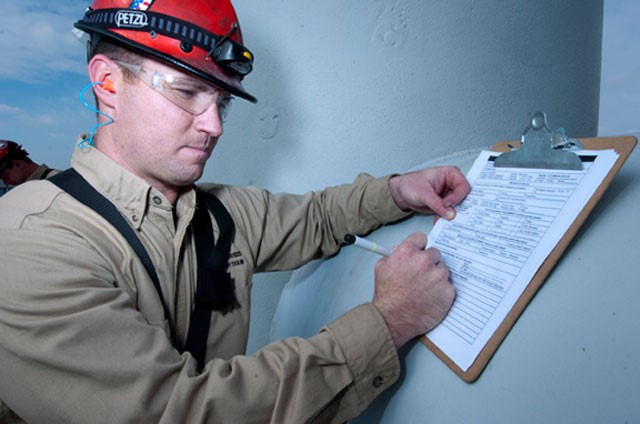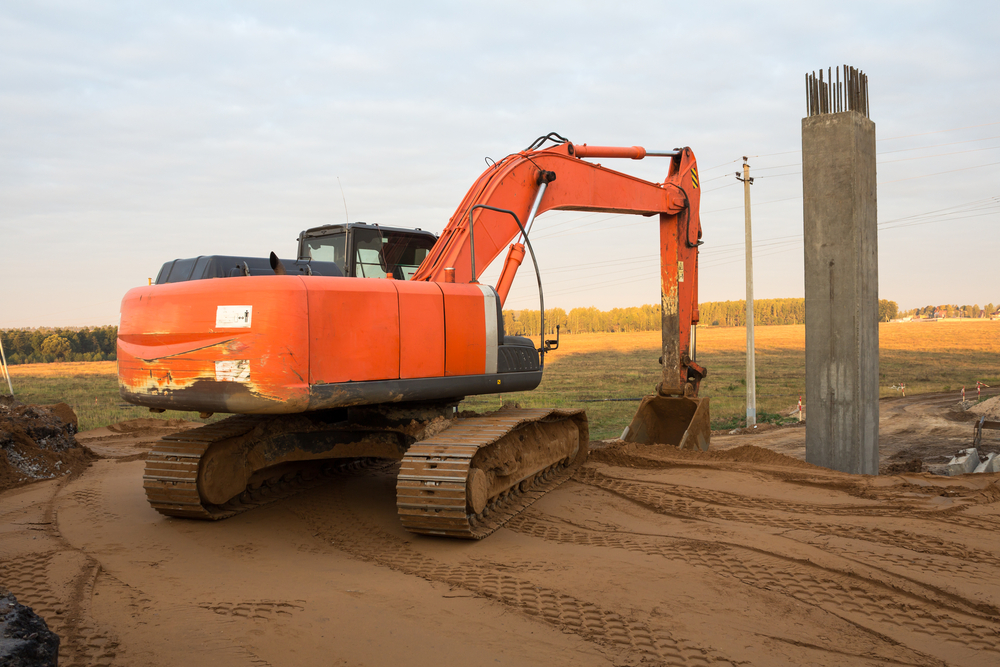
If you’re referring to using a crane as part of moving personnel or victims, the answer is “No, except in very rare and unique circumstances.” The justification for using a crane to move personnel, even for the purposes of rescue, is extremely limited. Therefore, it is very important to understand the do’s and don’ts for using a heavy piece of equipment in a rescue operation.
On the practical side, the use of a crane as a “stationary, temporary high-point anchor” can be a tremendous asset to rescuers. It may also be part of a rescue plan for a confined space; for example, a top entry fan plenum. The use of a stationary high-point pulley can allow rescue systems to be operated from the ground. It can also provide the headroom to clear rescuers and packaged patients from the space or an elevated edge.
 Of course, the security of the system's attachment to the crane and the ability to “lock-out” any potential movement are a critical part of the planning process. If powered industrial equipment is to be used as a high-point, it must be treated like any other energized equipment with regard to safety. Personnel would need to follow the Control of Hazardous Energy [Lockout/Tagout 1910.147]. The equipment would need to be properly locked out – (i.e., keys removed, power switch disabled, etc.). You would also need to check the manufacturer’s limitations for use to ensure you are not going outside the approved use of the equipment.
Of course, the security of the system's attachment to the crane and the ability to “lock-out” any potential movement are a critical part of the planning process. If powered industrial equipment is to be used as a high-point, it must be treated like any other energized equipment with regard to safety. Personnel would need to follow the Control of Hazardous Energy [Lockout/Tagout 1910.147]. The equipment would need to be properly locked out – (i.e., keys removed, power switch disabled, etc.). You would also need to check the manufacturer’s limitations for use to ensure you are not going outside the approved use of the equipment.Back to using a crane for moving personnel – because of the dangers involved, OSHA severely limits its use. In order to utilize a crane, properly rated “personnel platforms or baskets” must be used. Personnel platforms that are suspended from the load line and used in construction are covered by 29 CFR 1926.1501(g). There is no specific provision in the General Industry standards, so the applicable standard is 1910.180(h)(3)(v).
This provision specifically prohibits hoisting, lowering, swinging, or traveling while anyone is on the load or hook.OSHA prohibits hoisting personnel by crane or derrick except when no safe alternative is possible. The use of a crane for rescue does not provide an exception to these requirements unless very specific criteria are met. OSHA has determined, however, that when the use of a conventional means of access to any elevated worksite would be impossible or more hazardous, a violation of 1910.180(h)(3)(v) will be treated as “de minimis” if the employer complies with the personnel platform provisions set forth in 1926.1501(g)(3), (4), (5), (6), (7), and (8).
Note: De minimis violations are violations of standards which have no direct or immediate relationship to safety or health. Whenever de minimis conditions are found during an inspection, they are documented in the same way as any other violation, but are not included on the citation.
Therefore, the hoisting of personnel is not permitted unless conventional means of transporting employees is not feasible. Or, unless conventional means present even greater hazards (regardless if the operation is for planned work activities or for rescue). Where conventional means would not be considered safe, personnel hoisting operations meeting the terms of this standard would be authorized.
OSHA stresses that employee safety, not practicality or convenience, must be the basis for the employer's choice of this method.However, it’s also important to consider that OSHA specifically requires rescue capabilities in certain instances, such as when entering permit-required confined spaces [1910.146]; or when an employer authorizes personnel to use personal fall arrest systems [1910.140(c)(21) and 1926.502(d)(20)]. In other cases, the general duty to protect an employee from workplace hazards would require rescue capabilities.
Consequently, being “unprepared for rescue” would not be considered a legitimate basis to claim that moving a victim by crane was the only feasible or safe means of rescue.
 This is where the employer must complete written rescue plans for permit-required confined spaces and for workers-at-height using personal fall arrest systems – or they must ensure that the designated rescue service has done so. When developing rescue plans, it may be determined that there is no other feasible means to provide rescue without increasing the risk to the rescuer(s) and victim(s) other than using a crane to move the human load. These situations would be very rare and would require very thorough documentation. Such documentation may include written descriptions and photos of the area as part of the justification for using a crane in rescue operations.
This is where the employer must complete written rescue plans for permit-required confined spaces and for workers-at-height using personal fall arrest systems – or they must ensure that the designated rescue service has done so. When developing rescue plans, it may be determined that there is no other feasible means to provide rescue without increasing the risk to the rescuer(s) and victim(s) other than using a crane to move the human load. These situations would be very rare and would require very thorough documentation. Such documentation may include written descriptions and photos of the area as part of the justification for using a crane in rescue operations.Here’s the key… simply relying on using a crane to move rescuers and victims without completing a rescue plan and very clear justification would not be in compliance with OSHA regulations.It must be demonstrated that the use of a crane was the only feasible means to complete the rescue while not increasing the risk as compared to other means. Even then, there is the potential for an OSHA Compliance Officer to determine that there were indeed other feasible and safer means.
WARNING: Taking it a step further, if some movement of the crane (or fire department aerial ladder, for example) is required, extreme caution must be taken! Advanced rigging techniques may be required to prevent movement of the crane from putting undo stress on the rescue system and its components. Rescuers must also evaluate if the movement would unintentionally “take-in” or “add” slack to the rescue system, which could place the patient in harm’s way. Movement of a crane can take place on multiple planes – left-right, boom up-down, boom in-out and cable up-down. If movement must take place, rescuers must evaluate how it might affect the operation of the rescue system.
 Of course, one of the most important considerations in using any type of mechanical device is its strength and ability (or inability) to “feel the load.” If the load becomes hung up on an obstacle while movement is underway, serious injury to the victim or an overpowering of system components can happen almost instantly. No matter how much experience a crane operator has, when dealing with human loads, there is no way he can feel if the load becomes entangled. And, most likely, he will not be able to stop before injury or damage occurs.
Of course, one of the most important considerations in using any type of mechanical device is its strength and ability (or inability) to “feel the load.” If the load becomes hung up on an obstacle while movement is underway, serious injury to the victim or an overpowering of system components can happen almost instantly. No matter how much experience a crane operator has, when dealing with human loads, there is no way he can feel if the load becomes entangled. And, most likely, he will not be able to stop before injury or damage occurs. Think of it this way, just as rescuers limit the number of haul team members so they can feel the load, that ability is completely lost when energized devices are used to do the work.For rescuers, a crane is just another tool in the toolbox – one that can serve as temporary, stationary high-point making the rescue operation an easier task. However, using a crane that will require some movement while the rescue load is suspended should be a last resort! There are simply too many potential downfalls in using cranes. This also applies to fire department aerial ladders. Rescuers must consider the manufacturer’s recommendations for use. What does the manufacturer say about hoisting human loads? And, what about the attachment of human loads to different parts of the crane or aerial?
There may be cases in which a crane is the only option. For example, if outside municipal responders have not had the opportunity to complete a rescue plan ahead of time, they will have to do a “real time” size-up once on scene. Due to difficult access, victim condition, and/or available equipment and personnel resources, it may be determined that using a crane to move rescuers and victims is the best course of action.
Using a crane as part of a rescue plan must have rock-solid, written justification as demonstration that it is the safest and most feasible means to provide rescue capability. Planning before the emergency will go a long way in providing options that may provide fewer risks to all involved.
So, to answer the question, “Can I include the use of a crane as part of my written rescue plan?” Well, yes and no. Yes, as a high-point anchor. And, no, the use of any powered load movement will most likely be an OSHA violation without rock-solid justification. The question is, will it be considered a “de minimis" violation if used during a rescue? Most likely it will depend on the specifics of the incident. However, you can be sure that OSHA will be looking for justification as to why using a crane in motion was considered to be the least hazardous choice.
NOTE: Revised 9/2018. Originally published 10/2014.

 Most often, training programs treat the three functions as separate, independent roles locked into a hierarchy based on the amount of information to be provided. However, it’s critical to note, if any one of these individuals fails to perform his or her function safely or appropriately, the entire system can fail – resulting in property damage, serious injury or even death in a confined space emergency.
Most often, training programs treat the three functions as separate, independent roles locked into a hierarchy based on the amount of information to be provided. However, it’s critical to note, if any one of these individuals fails to perform his or her function safely or appropriately, the entire system can fail – resulting in property damage, serious injury or even death in a confined space emergency. In my opinion, depending exclusively on the Entry Supervisor is faulty on a couple of levels. First of all, the amount of blind trust that is required of that one person. From the viewpoint of an Entrant, do they really have your best interest in mind? And, we all know what happens when we “ass-u-me” anything! Plus, it puts the Entry Supervisor out there on their own with no feedback or support for ensuring that all the bases are covered correctly. There are no checks and balances, and no team approach to ensuring safety.
In my opinion, depending exclusively on the Entry Supervisor is faulty on a couple of levels. First of all, the amount of blind trust that is required of that one person. From the viewpoint of an Entrant, do they really have your best interest in mind? And, we all know what happens when we “ass-u-me” anything! Plus, it puts the Entry Supervisor out there on their own with no feedback or support for ensuring that all the bases are covered correctly. There are no checks and balances, and no team approach to ensuring safety. Many times, we find that the role of Attendant is looked upon as simply a mandated position with few responsibilities. They normally receive the least amount of training and information about the entry. However, the Attendant often serves as the “safety eyes and ears” for the Entry Supervisor, who may have multiple entries occurring at the same time. In reality, the Attendant becomes the “safety monitor” once the Entry Supervisor okays the entry and leaves for other duties. So, there’s no doubt, the better the Attendant understands the hazards, controls, testing and rescue procedures – the safer that entry is going to be!
Many times, we find that the role of Attendant is looked upon as simply a mandated position with few responsibilities. They normally receive the least amount of training and information about the entry. However, the Attendant often serves as the “safety eyes and ears” for the Entry Supervisor, who may have multiple entries occurring at the same time. In reality, the Attendant becomes the “safety monitor” once the Entry Supervisor okays the entry and leaves for other duties. So, there’s no doubt, the better the Attendant understands the hazards, controls, testing and rescue procedures – the safer that entry is going to be! There are countless injuries and deaths across the nation when workers are not taught to recognize the inherent dangers of permit spaces. They are not trained when "not to enter" for their own safety. Many of these tragedies could be averted if workers were taught to recognize the dangers and know when NOT to enter a confined space.
There are countless injuries and deaths across the nation when workers are not taught to recognize the inherent dangers of permit spaces. They are not trained when "not to enter" for their own safety. Many of these tragedies could be averted if workers were taught to recognize the dangers and know when NOT to enter a confined space. The DPW had developed a permit-required confined space program but stopped implementing it in 2004 when the last trained employee retired. They also had purchased a four-gas (oxygen, hydrogen sulfide, carbon monoxide and combustible gases) monitor and a retrieval tripod to be used during the training. It was reported that a permit-required confined space program was never developed because DPW policy “prohibited workers” from entering a manhole. However, the no-entry policy was not enforced. Numerous incidents of workers entering manholes were confirmed by employee interviews.
The DPW had developed a permit-required confined space program but stopped implementing it in 2004 when the last trained employee retired. They also had purchased a four-gas (oxygen, hydrogen sulfide, carbon monoxide and combustible gases) monitor and a retrieval tripod to be used during the training. It was reported that a permit-required confined space program was never developed because DPW policy “prohibited workers” from entering a manhole. However, the no-entry policy was not enforced. Numerous incidents of workers entering manholes were confirmed by employee interviews.
.jpg) We all want to succeed, no matter what we are doing. And success is always better than the alternatives…whether a mediocre performance or worse yet, failure.
We all want to succeed, no matter what we are doing. And success is always better than the alternatives…whether a mediocre performance or worse yet, failure.



